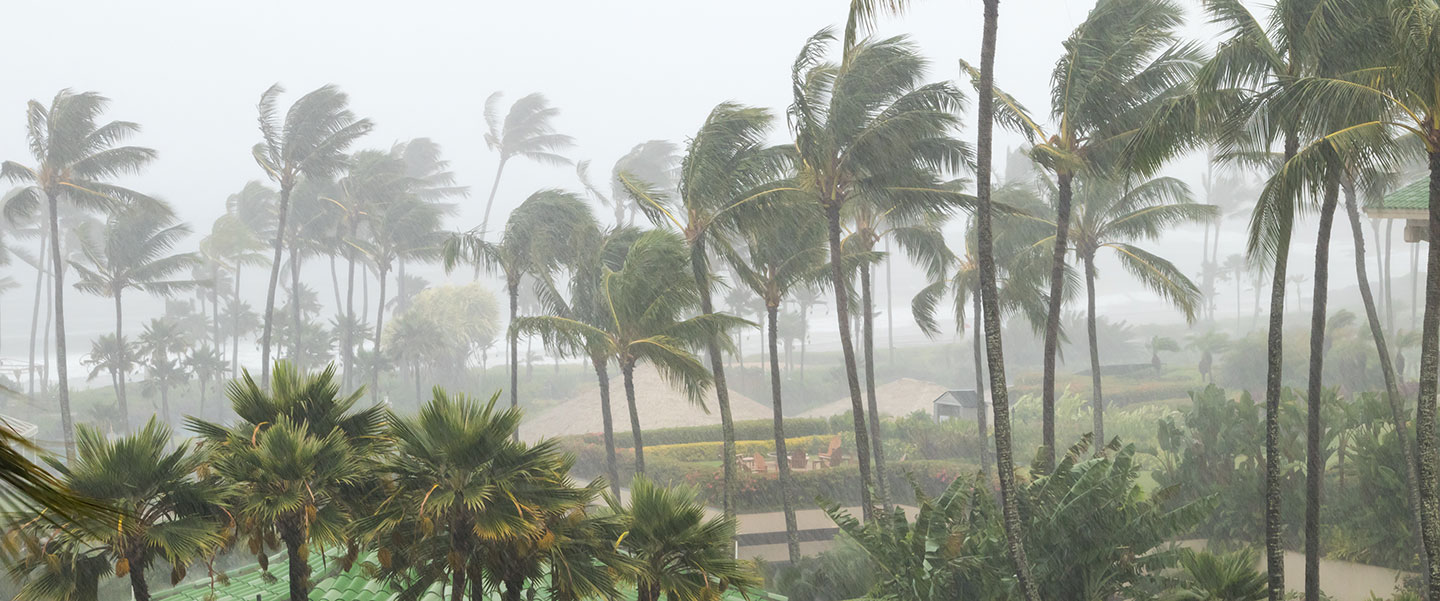CATEGORIES:
2024 Hurricane Preparation
October 9, 2024

This blog post was originally posted in 2020, but it has been updated with current data.
We were warned that this year (2024) would bring a particularly harsh season for hurricanes and tropical storms. Hurricane season lasts from June 1 to November 30, and though it started mild, the violence of hurricane season has officially reared its head.
Currently, Hurricane Milton is wreaking havoc on the Florida coast. If you’ve reached this page looking for resources during that storm, check out the following links:
Hurricanes, and the tornadoes, high winds, and floodwaters that they bring with them, won't take a break this year (or any year). So it’s up to you to be as prepared as possible. Know where your nearest community shelter is. Make sure, also, that it will be open to you. And figure out exactly how you’ll get there.
You should also have a hurricane preparedness kit ready. They say that the best time to prepare for a hurricane is before the season begins. The second best time is now. Read on to learn more about hurricanes and the precautions you can take to protect yourself during this active hurricane season.
Hurricane Basics
First of all, we should say a bit about hurricanes themselves. Hurricanes are huge, rotating, low-pressure storm systems (tropical cyclones) forming over tropical or subtropical ocean waters. They bring with them strong winds and heavy rainfall. These hazards can cause tornadoes, flooding, and the potential for loss of life and destruction of property.
On a weather map, you may recognize a hurricane by the distinctive “eye” in its center. This is an area of calm surrounded by the storm’s fierce rotation. The “eyewall,” which encircles the eye, is closest to it and has the strongest winds.
A hurricane has winds that blow at 74 mph or higher. Tropical storms have winds just below that, falling in the range of 39-73 mph. Tropical depressions have winds that max out at less than 39 mph.
The five hurricane categories are defined in the Saffir-Simpson Hurricane Wind Scale. They're labeled category 1-5 based on their sustained wind speeds. Any storm designated category 3 or above (with winds at, or exceeding, 111 mph) is a “major hurricane.” Category 5 hurricanes can have sustained winds exceeding 180 mph and gusts that reach 200 mph.
Are Hurricanes, Cyclones, and Typhoons Different?
We have used the word “cyclone” in talking about hurricanes. You may be wondering what the difference is between a hurricane and a cyclone. And, how do typhoons fit in?
Hurricanes, cyclones, and typhoons are all the same type of storm systems. This is true even though we use the word “cyclone” generically to describe large rotating storms. The differences lie in where they originate. Hurricanes form in the North Atlantic Ocean or in the Caribbean, and also on the North American side of the North Pacific Ocean. Typhoons are storms that form in the North Pacific Ocean but closer to Asia. Rotating storms that form in the Southern Hemisphere and throughout the Indian Ocean (even the parts of it that are north of the equator) are known simply as cyclones.
Incidentally, the winds of tropical cyclones move counter-clockwise north of the equator and clockwise south of the equator, due to the Coriolis Effect.
Hurricanes vs. Tornadoes
Unlike tornadoes, hurricanes can be tracked well before they strike land. Their movements are more predictable. Whereas tornadoes may strike with little to no warning, meteorologists often identify hurricanes days before they make landfall. Tornadoes may rampage through an area quickly—destroying homes in as little as four seconds—while hurricanes may linger for days.
Because meteorologists track hurricanes and warn the public in advance of their arrival on land, evacuation from the soon-to-be-affected area is a real option for most people. However, some people are not able to evacuate for various reasons.
For these people, a dedicated community hurricane shelter is still the best protection against the heavy winds and flying debris that these severe weather systems bring.
Are Tornado Shelters Safe During Hurricanes?
Though Survive-A-Storm Shelters are designed and built to be strong enough to protect occupants from the kinds of winds that occur during hurricanes, (and the tornadoes they spawn) we do not recommend their use during major hurricanes. Flooding is a very real and deadly side effect of hurricanes, and our shelters are not watertight.
It’s also important to note that FEMA guidelines call for different occupancy numbers for hurricane shelters compared to tornado shelters. Hurricanes are much longer-lasting storms, meaning that persons seeking shelter may need to do so for a greater length of time.
FEMA P-361, which provides guidelines for community safe rooms, advises that a standing or seated person be allotted at least 20 square feet of floor space in a hurricane shelter. This is a fourfold increase over the space that the same person needs to have in a tornado shelter (that is, five square feet). Individuals in wheelchairs and those in medical beds also require more space in community safe rooms during hurricanes (20 square feet and 40 square feet, respectively, compared to just 10 square feet and 30 square feet).
Community Storm Shelters and Hurricanes
If you can’t evacuate to escape the projected path of a hurricane, then a dedicated community storm shelter is the safest place for you to be. The American Red Cross keeps an updated list of such community shelters. You can also look up your state's emergency management agency on the FEMA website.
You should take refuge in a community shelter if a hurricane is approaching. Do this just as you would if your county were placed under a tornado warning.
Hurricane Preparedness Kits and Extra Precautions
There is no reason why you can’t (and shouldn’t) protect yourself from severe weather. One way to do this is to take additional precautions when assembling your hurricane preparedness kit.
Under normal circumstances, a hurricane preparedness kit should contain, at a minimum, water, non-perishable food, a flashlight, an NOAA weather radio, extra batteries, a first-aid kit, and any prescription medications you or your family members will need.
The Ready.gov site has a preparedness checklist that can be downloaded and printed for convenience.
Survive-A-Storm Will Keep Your Community Safe
If you're planning for your community's next storm season, Survive-A-Storm has you covered, whether you’re seeking a community storm shelter to protect your business, your school, your mobile home park, or your neighborhood. We have above-ground shelters, underground shelters, and transitional shelters to protect your community, no matter who's in it.
Contact us at 1-888-360-1492 today! Find out how we can protect your community from hurricanes, tornadoes, and other severe weather events.




